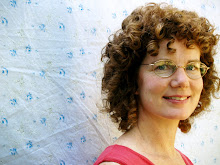
Here's little Miss Adele having a blast in a Village class – could this baby BE any more joyful, happier, delighted? No!!!
She is in the moment, and because she is, so is Kelly, her wonderful mom.
Aside from all the FUN that Adele is having, she is also experiencing a whole host of experiences that a Kindermusik class provides: movement and music and rhythm and steady beat and laughter and vestibular system stimulation and tempo and about fifty other areas of brain development.
In many of the classes this past week, when I remembered to (!), I pointed out the quote I’d posted on the bulletin board behind my instrument table - “When we treat our children’s play as seriously as it deserves, we are helping them to feel the joy that’s to be found,” by Fred Rogers and Barry Head.
In this picture it is clear that joy is being felt, experienced, shared. When we experience it ourselves, well, what a blessing. When we experience it in a group, it becomes something that, by virtue of simply being together, we are reminded how important it is to be in this moment, be here now, that everything important is right here, right now.
This got me to thinking about the following article I thought you might find interesting and valuable. It is adapted from the Nov/Dec 1999 issue of Kindermusik Notes and was originally written by Anne Green Gilbert, Director of the Creative Dance Center and Kaleidoscope Dance Company in Seattle, Washington, and a consultant for Kindermusik International.
What is really cool about the reference to Anne is that long-time Kindermusik parent, Mary Beth Tanner studied with her in Greensboro, where Mary Beth majored in dance. It’s a small world!
Music and Movement: The Keys to Learning
Music and movement are magical ingredients to learning for both parent and child. A baby's first communication is through movement. A toddler will respond immediately to lively music with what seems to be humorous gyrations but to him are quite serious attempts to coordinate movement with rhythmic patterns. The young child seems to be moving constantly - leaping off couches, rolling down hills, and spinning around and around until she falls down in a giggling flop on the floor.
Our brains fully develop through movement activities such as crawling, rolling, turning, walking, skipping, reaching, swinging and much more. The brain has a plan for development that involves specific and intensive motor activities to make full use of our complicated nervous system. The nervous system of each human being must go through a series of developmental stages before the brain can operate at its full potential. All children "program" their motor and perceptual equipment, nerves and brain cells by using their whole body and all their senses.
Movement is fundamental for the development of the central nervous system but movement and rhythm are also essential for the development of the soul. When a parent moves with her infant, a special bonding takes place that is extremely important for social and emotional growth. When a parent sings to her child, not only are language skills being developed, but also a sense of love, comfort and harmony. The special touching, laughing and rhythmic moving that takes place in a music and movement class lays a very strong and much needed foundation for a happy, healthy and joyful life!
The Kindermusik curricula are especially designed to provide opportunities for infants, toddlers, pre-schoolers and young children to learn through interactive music and movement activities. Kindermusik class provides parents and children a variety of stimulating experiences that will be beneficial for everyone.
Movement activities are key components to all Kindermusik curricula:
· Intentional touch is designed to provide stimulation of the nervous system, relaxation and bonding.
· Activities involve unilateral, bi-lateral and cross-lateral movements that help develop the brain and muscles.
· Movement and dance steps allow the caregiver and child to experience different rhythms and locomotor movements.
· Synchronized dances develop sequencing, provide reassuring repetition and social interaction.
· Expressive movement provides variety, creativity and opposing feelings such as fast and slow, high and low.
· Rocking and swinging stimulate the vestibular system, which is so important to balance and even eye movement.
· Props, such as the "humongous" scarves, provide tactile and visual stimulation.
Kindermusik At Home materials extend these music and movement activities so you can explore, dance and sing at home. Only on Kindermusik CDs will you find such a wide diversity of musical styles from different cultures that evoke different types of movement.
Put on your Kindermusik CD at home and don't worry about performing the dances the "right" way. Don't even worry about right and left! Just move to the music and adapt and vary the steps if necessary so that you feel comfortable and have fun!



